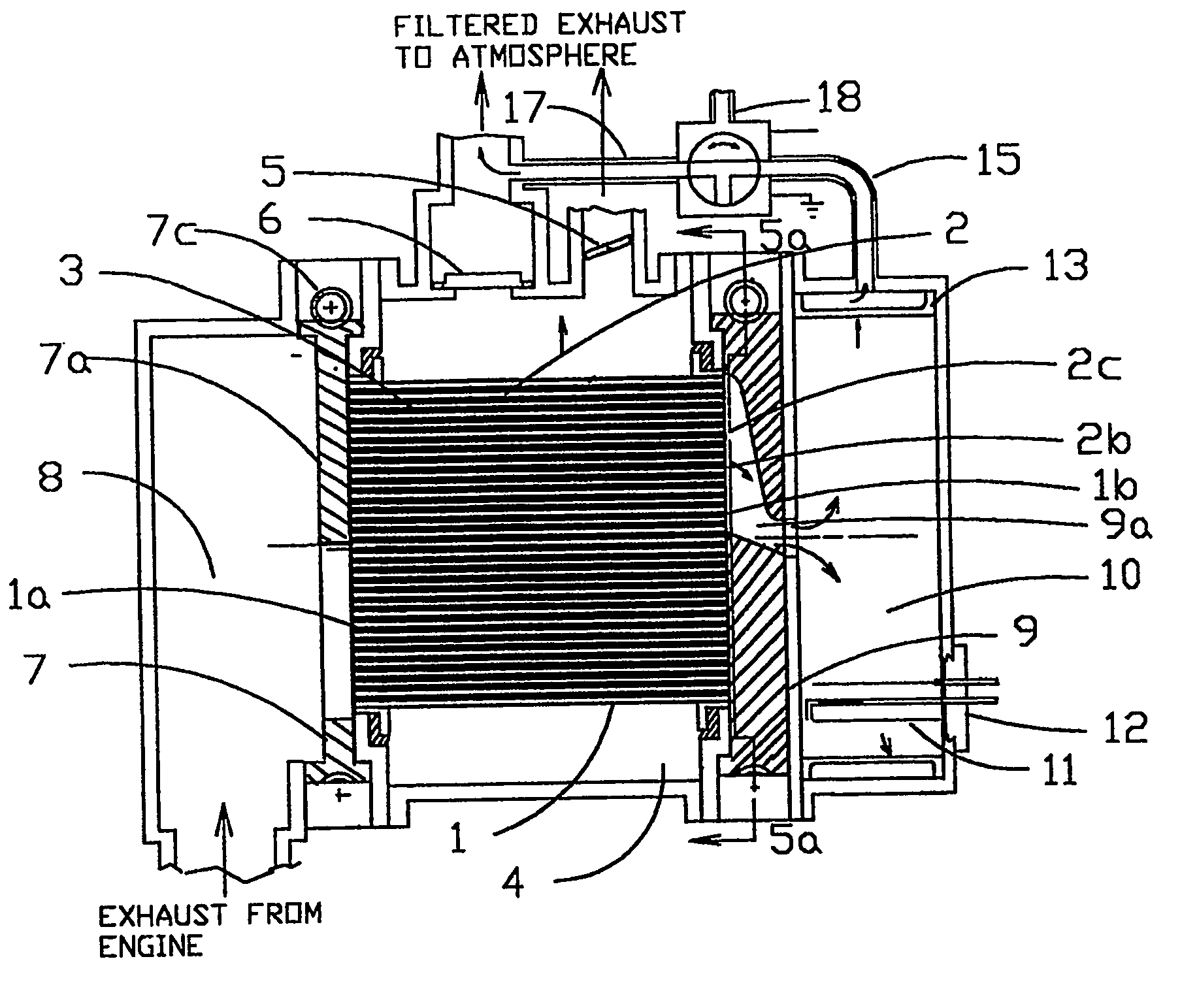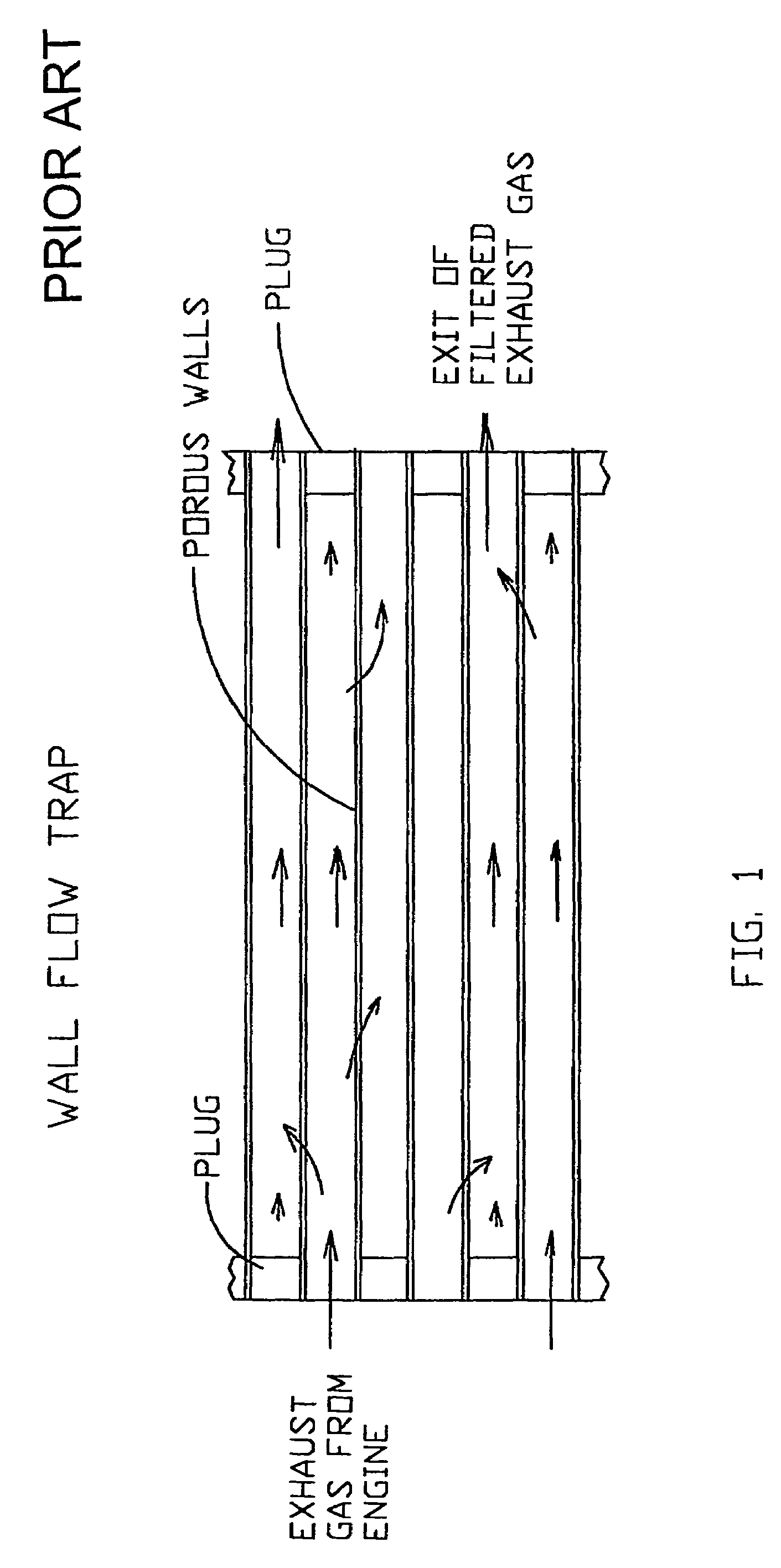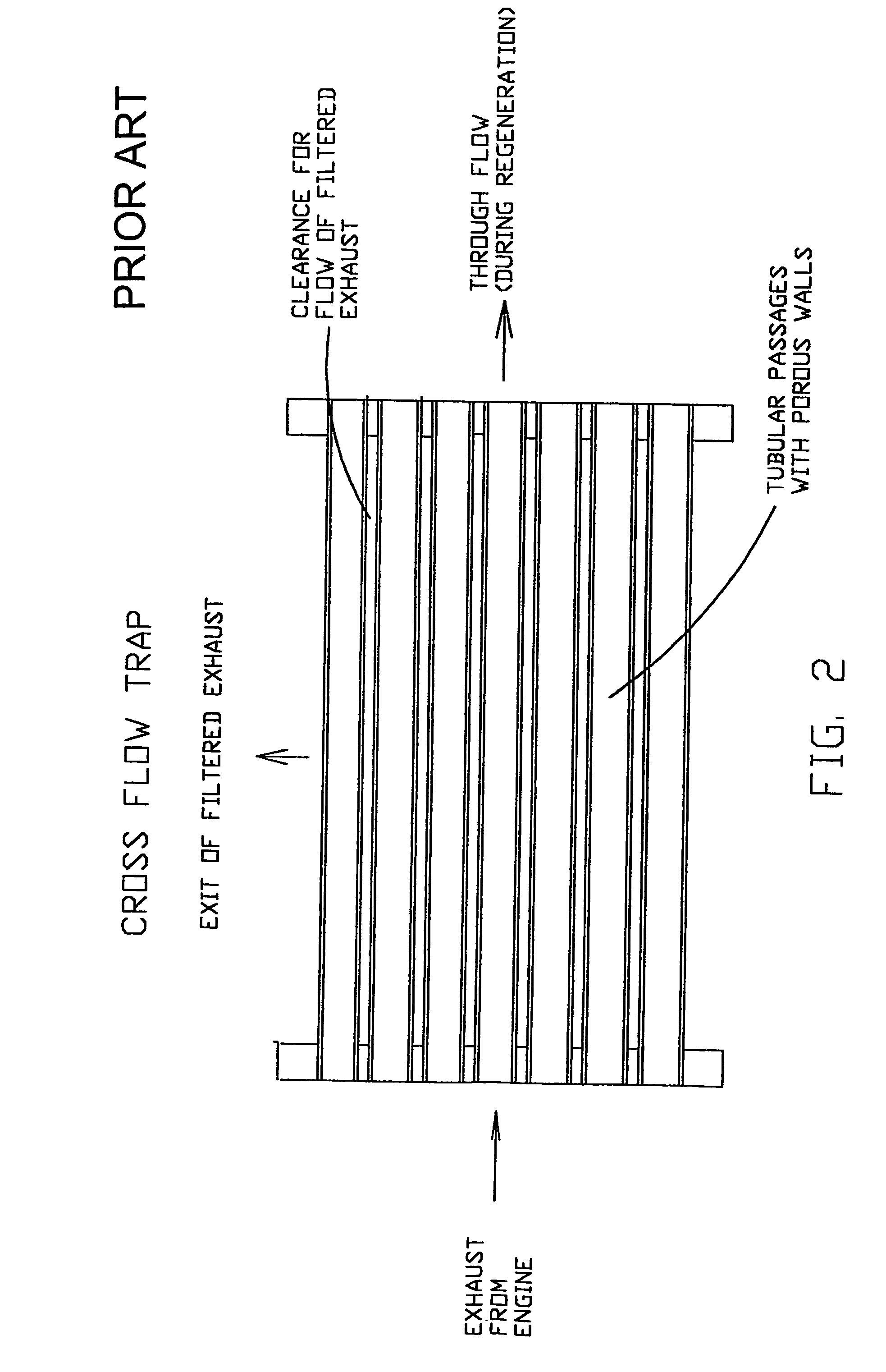Apparatus and method for filtering particulate and reducing NOx emissions
a technology of particulate filter and nox emission, which is applied in the direction of machines/engines, chemical/physical processes, surface coverings, etc., can solve the problems of cracking and melting of the traps, loss of energy, and pressure drop across the traps, so as to reduce the weight of the filter structure, increase the engine fuel consumption, and reduce the effect of sulfur fuel
- Summary
- Abstract
- Description
- Claims
- Application Information
AI Technical Summary
Benefits of technology
Problems solved by technology
Method used
Image
Examples
Embodiment Construction
[0090]The current invention relates to a particulate trap system that uses either cross flow or wall flow traps and has means for accomplishing reverse flow of the exhaust gas as well as through flow of the exhaust gas to dislodge, erode and remove the soot and ash build-up at temperatures below the ignition point of soot and at pressures and flow rates normally encountered in internal combustion engines, thereby resulting in minimal adverse effects on engine performance. The particulate trap system accomplishes the regeneration or removal of the soot and ash build-up by reverse flow or a combination of reverse flow and through flow to dislodge and erode the soot and ash build-up through a physical or mechanical mechanism, without the addition of heat to burn the soot. The invention eliminates the need for high temperatures and / or the use of expensive catalysts. The ignition of the soot and subsequent combustion of the ash take place in a separate, small and robust chamber. An advan...
PUM
| Property | Measurement | Unit |
|---|---|---|
| Temperature | aaaaa | aaaaa |
| Temperature | aaaaa | aaaaa |
| Temperature | aaaaa | aaaaa |
Abstract
Description
Claims
Application Information
 Login to View More
Login to View More - R&D
- Intellectual Property
- Life Sciences
- Materials
- Tech Scout
- Unparalleled Data Quality
- Higher Quality Content
- 60% Fewer Hallucinations
Browse by: Latest US Patents, China's latest patents, Technical Efficacy Thesaurus, Application Domain, Technology Topic, Popular Technical Reports.
© 2025 PatSnap. All rights reserved.Legal|Privacy policy|Modern Slavery Act Transparency Statement|Sitemap|About US| Contact US: help@patsnap.com



